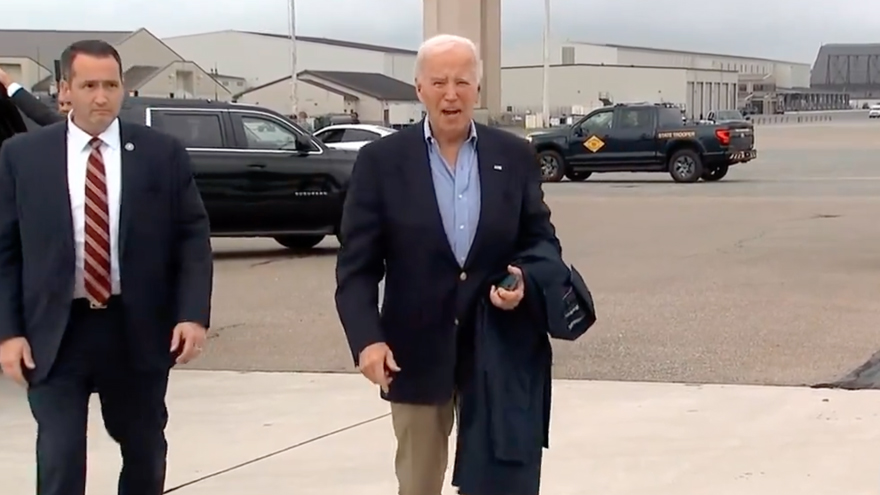During WWII, British intelligence seeded a dead man with fake plans for the invasion of Sicily and let the Germans find the body, along with an entire fake history, persona and confirmations from their own agents. It was called “Operation Mincemeat” and it was arguably the culmination of the Brits total possession of the Abwehr. This was one of those secrets that was so deeply buried that only a handful of people knew about it. Security leaks aren’t always what they seem to be.
The classified leaked documents that have been percolating through Twitter and other sites seem to be authentic, but authentic doesn’t necessarily mean unanticipated. There are at least two possibilities here. One is that the documents were part of a classified briefing that someone with access betrayed and defeated INFOSEC. If that’s true, shame on us. The other possibility is that the documents were specifically planted to be leaked, either as part of a “honey pot” operation to expose actual spies within our intelligence community (or in other parts of government cleared to receive briefings), or as a package of disinformation for whatever purposes those who put it together have cooked up.
Taken together, the documents don’t really offer anything earth shattering. Ukraine’s need for ammunition and air defense have been well-known for months. President Volodymyr Zelenskyy has been pressing western allies for these weapons, including a plea to the G-7 in December, 2022.
It’s always been an open secret that the U.S. spies on its allies, including South Korea. The part about how deeply American intelligence has penetrated Russia’s security services might actually serve our interests. Getting the Russians to engage in extreme paranoid searches for moles diverts their efforts and could expose their own moles in our intelligence gardens. The fact that we would be spying on Ukraine is not a surprise to anyone.
The subdued reaction from top U.S. intelligence officials like NSC spokesman John Kirby might be a tell. Or it might be a legitimate understated reaction to a major problem. One expert claimed it was the “tip of the iceberg.”
What we do know is that the U.S. intelligence community, and the sheer number and volume of secret material, briefings, and analysis is extremely large and bloated. Individually, the controls used to store, produce, and distribute top secret information are pretty robust. If you’ve ever entered a SCIF, you know. When I worked at Robins AFB, I once was gently upbraided by a two-star general for asking, twice, what a particular directorate known only by its “office symbol” (a two letter code indicating the taxonomy of the unit) did and receiving the office symbol as the answer. There are windowless buildings on base, behind fences screaming “don’t ask.” Don’t try to take your smartphone in those buildings, if you are invited in.
However, in Washington, D.C., classified briefings are as common as colonels filling coffee pots at the Pentagon. (To say: there’s a lot of them.) Technically, these briefings and the materials offered at them should be conducted in a SCIF, and again, there are rooms for this at the Capitol and at various government office buildings scattered around the city. However, there are so many briefings tailored to so many groups, it’s inevitable that the same materials are recycled, shuffled, and presented to several groups. Any number of individuals with clearance to handle those documents could have assembled the trove, smuggled it out, photographed it, and published the photos.
Yet the number of those individuals is finite, and investigators will certainly focus on those who may have handled. Of course that’s unless they already know who the leaker is.
We also know that the method of leaking is possibly one of the most traceable methods. On first glance, a picture of documents with their markings visible, should give investigators a good starting point as to where these documents were assembled, as POLITICO reported. National Review’s Jim Geraghty noted that nearly all consumer color printer models produce digital watermarks that investigators can use to trace the model and serial number of the printer used to produce the image. That’s how Trump document leaker Reality Winner was found so quickly, according to the blog Errata Security (and the fact that she emailed the PDFs to The Intercept from her work computer).
Since the PATRIOT Act was passed in the heated rush to fight terrorism in 2001, the volume of source data and classified analyses has blossomed to almost ridiculous levels. Edward Snowden confirmed this with his massive document leak. The fact that our government has a giant campus in Utah called the “Domestic Surveillance Directorate” makes the hairs on the back of my neck stand up, and stimulates all kinds of Orwellian references in my brain. Not to mention that such facilities, and the faceless people who operate them, would be quite at home in the vernacular of former STASI officials.
If the leak was genuine, the leaker would need the resources of a nation state security service behind him or her to protect the methods and traceability of the documents to a person and point in time. The PATRIOT Act gives the government almost unlimited authority, with practically no judicial oversight, to collect, sift, correlate, and act on impossibly large volumes of data harvested from billions of devices. Such power was never meant to be in the hands of a democratically-elected, Constitutionally-limited executive branch. (As an aside, it’s no wonder our intelligence community freaked out when Michael Flynn as National Security Advisor teamed up with President Donald Trump and Steve Bannon to run our intel shop. They know better than anyone how scary that kind of power is.)
The second possibility, that the leak and disclosures are a red herring, a honey pot, or a psy-ops play, intrigues me. It’s just the kind of thing I’d expect our spy community to think up in order to smoke the Russians out into a misstep or revelation of their plans for Ukraine. Or for China to make some otherwise-inscrutable change in the midst of the most provocative military exercises, physically surrounding Taiwan, to betray some suspected but unknown intention or capability.
The Washington Post reported that despite shocking revelations that the U.S. has been spying on its allies, the response has been “Crickets, so far, at least publicly.” Parenthetically, the writers note “(Yes, allies spy on each other all the time, but revelations that undermine a democratically elected leader’s claim to be able to protect their citizens or their sovereignty come with a political price.)”
If the leaker was trying to make a point, what was it? That Ukraine can’t beat Russia without the help of the United States? That Russia isn’t beaten yet? These opinions are hardly fringe, or disinformation. Is the point that America’s spy network of human intelligence is robust, penetrating to the Kremlin itself and attending oligarchs and criminals in its orbit? Is the point to help Russia confirm some things it likely suspects about American intelligence-gathering capabilities? If that’s true, then why publish it, why not give it to the Russians directly?
Or maybe it’s to expose American assets within the Russian government through public exposure? But again, this kind of disclosure would lead to the U.S. doing everything it its power to protect those assets, including secreting them out of the country in a Robert Ludlum-style extraction. Better to be more subtle and circumspect, then spring the trap with a show trial and unmasking.
Or maybe it’s to confuse and mislead American and allied intelligence services? Maybe it’s 4-D chess played at the highest level. But either side could be playing that game. If the leak is genuine, and serves some hidden, laminous purpose to move just the right levers in favor of our adversaries, then it could just as easily be Americans making the play, and the leak is just genuine enough to interest those we want to be interested.
In other words, maybe our intelligence community put together its own Operation Mincemeat, and the leaks flinging around 4Chan and Twitter are the fake plans on the corpse of an invented Captain William Martin, a.k.a. “The Man Who Never Was.”
I’m hoping for the more intriguing option, because the alternative means that our INFOSEC program is in shambles. If I were running things (be glad I have no desire to), I’d kill all briefings to anyone in Congress, and anyone without an actionable role in the intelligence in question. I’d cancel the security clearances of every Member of Congress and all their staff. Then I’d sic the DIA, the FBI and every other three-letter acronym we’ve got on re-investigating these birds, feather by feather, starting at their cloaca and ending at their beak.
Of course that would not be the politically advantageous thing to do. So what I think will happen is this will run its course in the press until the next stupid thing Donald Trump utters (it’s probably already happened before this even publishes) and then it will be largely forgotten. If there’s a leaker, it will be an anticlimax. If not, then whatever purpose the leaks served had its moment and blew away like a malevolent cloud that brought no rain.
Only occasionally does the public get to glimpse into the keyholes where eyes peer out upon us. This could be one of those times, except instead of the Glomar Explorer searching for fake minerals in the North Pacific, we get to see Telegram, 4Chan and Twitter mined with half-fake secrets and True Lies.
Follow Steve on Twitter @stevengberman.
The First TV contributor network is a place for vibrant thought and ideas. Opinions expressed here do not necessarily reflect those of The First or The First TV. We want to foster dialogue, create conversation, and debate ideas. See something you like or don’t like? Reach out to the author or to us at ideas@thefirsttv.com.






